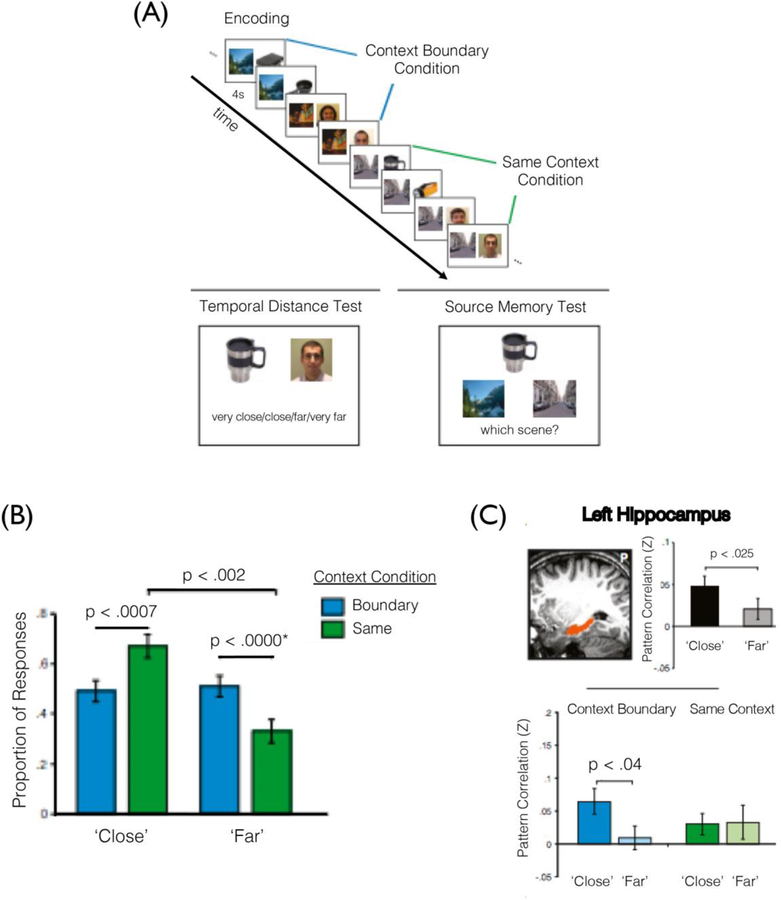Figure 2.
Remembering items as appearing closer together relates to more stable encoding patterns of hippocampal activity across time. (A) In this fMRI study, participants view a series of images that were organized as “quartets.” A face or object was paired with a scene that either remained the same for four trials (same context condition) or switched after two trials (boundary context condition), creating a stable or less stable context, respectively. Memory was then tested for the temporal distance between items as well as source memory for an item and its paired scene. (B) Results showed that participants were more likely to remember items from the same context as appearing closer together in the sequence; by contrast, participants were more likely to remember items that had spanned a context shift as having appeared farther apart in the sequence. (C) Ratings of closer temporal proximity were associated with greater hippocampal pattern similarity across event boundaries (adapted from Ezzyat & Davachi, 2014).

